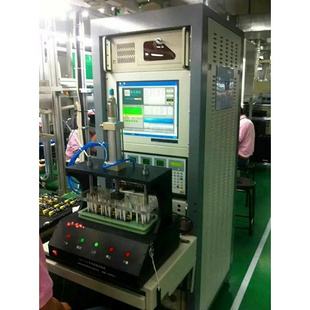
It might not be immediately obvious, but semiconductors and integrated circuits are common in welding equipment. Below are three types of welding devices that employ semiconductors.
The adoption of high-power semiconductors proved to be a major breakthrough for welding power supplies. Older, transformer-based power supplies were bulky and generated excessive heat, and they were controlled by magnetic amplifiers. Semiconductors such as insulated gate bipolar transistors (IGBTs), metal-oxide semiconductor field-effect transistors (MOSFETs) and diodes enable switch-mode power supplies with inverter sections that switch power at high frequencies.
The introduction of these power supplies several decades ago represented a minor revolution for the welding industry. They are a fraction of the size of a transformer-based supply, draw significantly less power, are precisely controlled by solid-state instrumentation and can achieve a smooth, more stable arc. Later, inverter-based power supplies paired two inverters inside one case to supply alternating current (AC) output. These devices produce a stable AC arc ideal for gas tungsten arc welding (GTAW) of aluminum.
Diodes enable the construction of high-powered lasers that fit in small packages; these diode lasers in turn are gaining traction in laser welding applications. A diode’s inherent optical characteristics cause a diode laser’s output to spread rapidly, effectively preventing their use in precise, keyhole-style spot welding. But the inherent characteristics of diode lasers, discussed below, are proving useful in other applications.
An entire diode laser is contained on a single semiconductor. For welding applications, diode lasers can be moved quickly and mounted on small robot arms. As such, they are useful for welding automotive components within an engine or small medical devices such as pacemakers. A diode’s high efficiency means a diode laser can produce output levels as high as 100 W, despite its small size.
Diode lasers operate at shorter wavelengths than other solid-state lasers, fiber lasers or carbon dioxide lasers. Shorter wavelengths mean higher absorption characteristics, making diode laser welding ideal for welding thin sheets of stainless steel or aluminum, both of which are more reflective at longer wavelengths.
While diode lasers tend to scatter their light output, employing an optical fiber can focus this output to deliver high power densities. Using an optical fiber also means the light output can be delivered far from the actual diode, enabling welding in tight spaces as far as 100 ft from the diode itself.